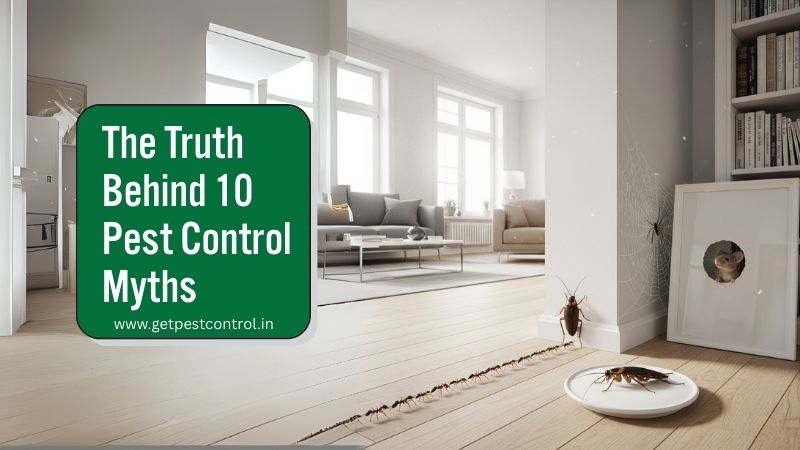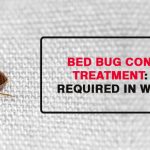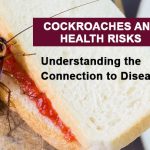Have you ever heard someone say that a cat in the house is enough to keep mice away? Have you ever heard that pests only invade dirty homes? These are the kinds of pest control myths people keep repeating. They sound convincing. They spread quickly.
But most of them are far from true.
The problem is simple. Pest control myths create false confidence. When you believe them, you don’t deal with pests the right way. On the contrary, infestations grow worse. They get harder to control. And you spend more money in the long run.
Let me break down ten common pest control myths. I will show you why people believe them. Why are they wrong? And what should you really do instead?
Myth 01: Pests Only Invade Dirty Homes
This is probably the most common pest control myth. People think pests come only because a house is messy or unhygienic. Yes, this is true. But not always. Pests invade a clean home, too.
Take a look at these examples.
- Ants can enter your spotless kitchen if they smell sugar.
- Termites don’t care if your floor shines. They eat wood, not dust.
- Bed bugs often infest luxury hotels and resorts as easily as they do small hostels.
Yes, clutter can make pest problems worse. It gives them more hiding spots. But saying pests only invade dirty places doesn’t make sense. In fact, a clean home is not a guarantee.
The real factor is access. If pests find food, water, or shelter, they will move in. It doesn’t matter whether your home is spotless.
Myth 02: Cats Keep Mice Away
Cats do hunt rats and mice. That’s true. But it does not mean having a cat is enough to make a home free from rodents.
Rats and mice are clever. They hide in walls. They hide in ceilings. And they can hide in even tiny cracks where a cat cannot reach.
Mice reproduce quickly. Even if your cat catches one or two, many more may remain. And it is also true that some cats are not even interested in hunting.
So, while a cat might reduce the number of visible mice, I don’t think it’s a real solution. You still need traps and proper sealing of entry points. And, sometimes you may also need professional pest control services.
Myth 03: Bed Bugs Are Too Small to See
Another pest control myth is that bed bugs are invisible to the human eye. Many people imagine they are microscopic. Seriously? It’s a myth, that too a big one.
The reality? Adult bed bugs are about the size of an apple seed. You can see them if you look closely. They are flat. They are reddish-brown. And they often hide in mattress seams, furniture joints, or behind headboards.
What makes them tricky is not size but behavior. They hide during the day. They come out at night to feed. That’s why people think they cannot be seen.
Knowing this helps. If you notice small blood spots on your sheets or dark stains on your mattress, this is a sign. Inspect carefully. You may spot the bugs or their shed skins.
Myth 04: Store-Bought Sprays Solve Everything
Some people believe that a can of insect spray is enough to deal with pests at home. Spray once, and the problem is gone.
Seriously? Do you also think that? You’re wasting your time and money. Also, you are putting your health at risk.
Yes, sprays can kill live pests, but rarely solve infestations. They often fail when it comes to destroying hidden nests. For example, spraying may kill the workers, but the queen stays safe in her colony, you know. She will produce more ants within days.
Cockroaches and termites are even tougher to deal with, even with store-bought sprays.
Sprays are best for short-term relief. Not long-term pest management. If you want results, you need a complete strategy.
Find the source. Seal the entry points. Use baits or taps. If the infestation is still not under control, don’t hesitate to call professional pest control services.
Myth 05: Termites Only Attack Old Homes
Many homeowners believe termites prefer old, weak structures. They assume new houses are safe.
But that’s not true. I have seen termite infestations in newly constructed buildings. The tiny creatures don’t know how to differentiate between an old home and a new one.
The age of a building does not matter. A brand-new wooden frame is just as attractive as an old one.
The reality? Termites often attack new homes because construction can disturb the soil. That brings those tiny insects closer to the surface, where they discover fresh wood.
Solution? It’s prevention, which is key to safeguarding. Even in a new house, regular inspection and treatment are necessary.
Myth 06: Boiling Water Destroys Ant Colonies
Pouring boiling water into an anthill wipes out the colony of ants. You may have heard of this.
It sounds logical. Hot water kills ants. But the truth is disappointing. And it turns into one of the pest control myths.
How? Let me clear things up. Boiling water only reaches a small part of the nest. Ant colonies can run deep underground with complex tunnels. This means hot water will kill a few ants only, near the surface. And this won’t stop the queen. As long as she survives, the colony rebuilds.
You may kill hundreds, but thousands remain. Real solutions involve baits or professional pest control treatment that reaches the heart of the colony.
Myth 07: Pests Die Off in Winter
Many people believe that pests vanish in cold weather. They assume winter is a pest-free season. If you also think so, you are following one of the pest control myths.
The truth? Pests don’t simply die. Most of them adapt. Rats and mice enter houses and premises to escape the cold. Cockroaches and spiders hide in warm basements. Destructive termites remain active in heated walls and foundations.
Even mosquitoes survive. They lay eggs that hatch in spring. Bed bugs are also not gone anywhere. They live comfortably in heated homes all year round.
So, don’t relax in winter. Pests are still around, just less visible outdoors.
Myth 08: Cheese is the Best Bait for Mice
Cartoons created this pest control myth. Mice are always shown running after cheese. The truth is different. They tend to enjoy foods that are rich in sugar or fat.
Peanut butter, chocolate, or dried fruit work much better. Cheese might attract them sometimes, but it is not their first choice.
If you are trying to catch mice, think beyond cartoons. Use what they really like, not what looks funny on TV.
Myth 09: Ultrasonic Repellents Drive Pests Away
You may have seen electronic devices that claim to repel pests using sound waves. They are marketed as modern, chemical-free pest control solutions.
But studies show mixed results. Some pests may react at first, but they quickly adapt. In many cases, these devices do nothing at all.
People often buy them, place them in corners, and feel safe. Meanwhile, pests continue to breed behind the walls.
If ultrasonic devices worked perfectly, pest control companies would be out of business. They are not a reliable option. They are just one of pest control myths.
Myth 10: DIY Methods Are Always Cheaper
This is one of the dangerous pest control myths. Many people avoid calling professionals because they believe DIY is always cheaper.
Sometimes DIY works for small problems. Setting a trap for one mouse or swatting a few flies is fine. But serious infestations are different.
When you try to fix them alone, you often end up spending money on sprays, traps, and powders repeatedly. The pests return, and the cost adds up. Worse, the infestation spreads. By the time you call a professional pest control company, the damage is large and more expensive.
Why Pest Control Myths Keep Spreading
You may wonder why these pest control myths survive. The answer is simple. They sound easy. They offer quick fixes.
People really enjoy the idea of simple solutions. They don’t think about a long-term solution. They don’t want to think about termites eating away at their house. And they don’t want to think about bed bugs hiding in their mattress. So they hold on to comforting half-truths.
But ignoring facts never helps. Myths delay real action. And pests love delay.
The Right Way to Handle Pests
Here are some simple tips to help you focus and cut through the noise.
- Stay alert to signs. Droppings, tiny holes, or strange smells often appear before a full infestation.
- Seal entry point. Block cracks. Repair screens. And cover gaps under doors.
- Maintain food storage. Keep food sealed in containers. Clean up crumbs and spills instantly.
- Reduce moisture. Fix leaks and seepage. Keep damp areas dry. And keep basements ventilated.
- Call professional pest control services when needed. Some pests, like termites and bed bugs, are stubborn. They are nearly impossible to handle alone.
These steps may not sound as exciting as pest control myths, but they actually work.
Final Thoughts
Pest control myths are everywhere. People repeat them at family dinners, in offices, and even on social media.
But the truth is clear.
Remember one thing: myths do not stop pests. The only thing you will see is that the increased infestation is harder to handle.
If there’s one thing to remember from this blog, let it be this: pests don’t care about stories.
Pests follow food. They need water. They need shelter. You can only eradicate them with facts, not fables.
So next time someone tells you that cheese is the best mouse bait, or that pests die in winter, you will know the truth. And maybe, you can help bust the pest control myth for them, too.
Looking for Reliable Pest Control Services?
We offer professional pest control solutions in Delhi, Pune, Mumbai, Bangalore, Ahmedabad, Hyderabad, and many other cities across India. Whether you’re dealing with termites, cockroaches, rodents, or any other pests — our expert team is here to help.
👉 Contact us today to schedule a service or get a free quote!










